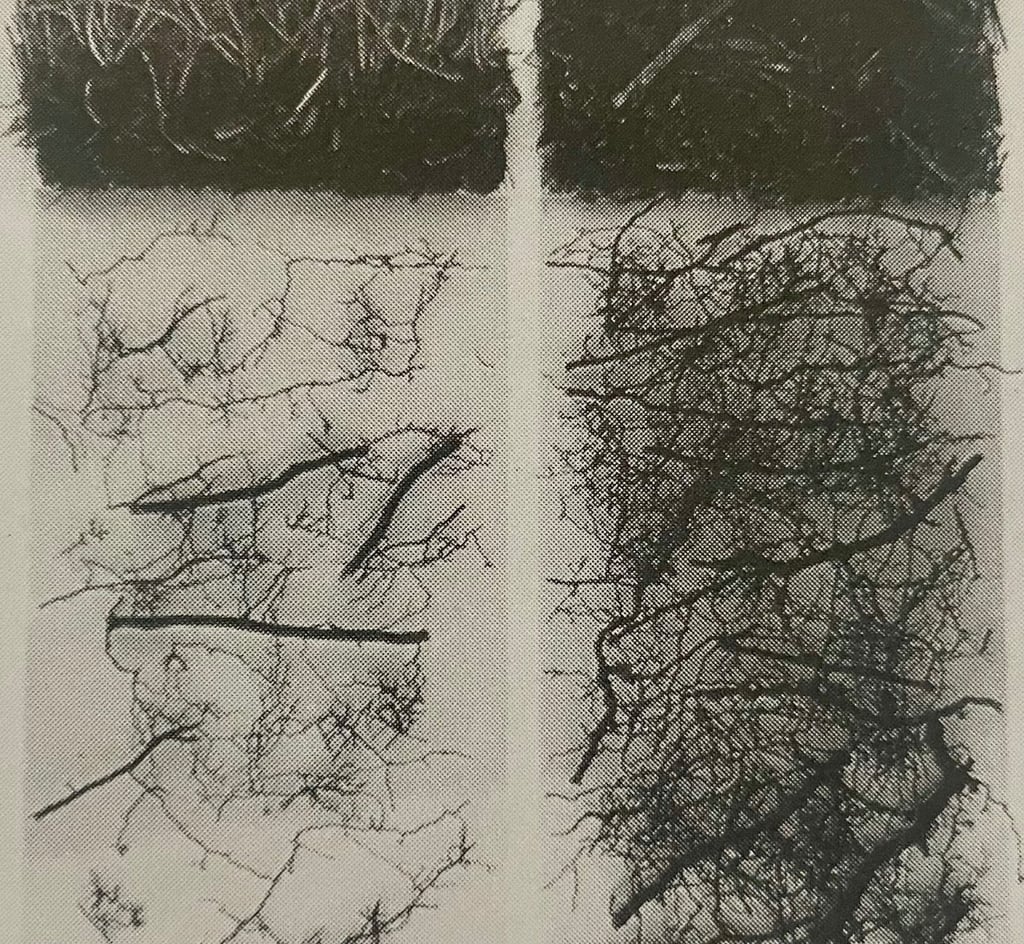Grass vs Trees: Tips for a Balanced Australian Garden | Arborist Advice
Learn how to balance lawn and trees in your garden. Discover tips for healthy growth and keeping roots below the surface.
1/5/20252 min read


In the realm of arboriculture and gardening, the coexistence of lawn-grass and trees presents a unique challenge. While lawn and trees might seem like the perfect pairing in gardens, they often engage in a subtle competition that can have significant implications for the growth and health of trees.
Lawn vs. Trees: A Silent Competition
Studies reveal that grass can significantly impede the growth of young trees if allowed to grow too close. For example, trees surrounded by natural forest floor mulch had much denser absorbing roots, crowns more than 50% larger, and trunk callipers more than 150% larger compared to those grown in turf on compacted clay. This stark contrast highlights the competitive nature of turfgrass against tree development.
Ensuring Tree Health Amidst Turf
To foster healthier trees, arborists and gardeners need to adopt strategic practices. While proper irrigation and fertilisation can alleviate some growth suppression caused by lawn, they cannot eliminate it entirely. It’s advisable to maintain a grass-free zone of at least 300 mm around the base of young trees, and as close as possible to the width of a mature trees’ canopy, to prevent growth suppression and health issues.
The Issue of Surface Roots
A frequent consequence of trees receiving light, frequent irrigations (a broadly practiced care routine to achieve lush lawns) is the development of surface roots. These roots often emerge when drainage is also restricted creating a surface level water environment for searching tree roots to adapt to. Surface roots can also compromise the aesthetics and functionality of lawns, making it harder to maintain a smooth, even surface.
For gardeners, this can mean that even well-established trees may start to show roots above the ground, competing with grass and potentially causing problems with lawn maintenance. This highlights the importance of understanding how irrigation practices and soil conditions can impact the root systems of trees, prompting the need for careful planning in the layout of lawns and tree plantings.
Practical Tree Protection Measures
Protecting trees from the competition of lawn-grass and the issues caused by surface roots involves thoughtful landscaping. Ensuring proper drainage and maintaining grass-free, mulched zones around the base of trees are crucial steps. Arborists may also recommend reducing the frequency of irrigation around trees to discourage the formation of surface roots, allowing for a healthier root system that delves deeper into the soil.
For Australian arborists, gardeners, and tree enthusiasts, understanding the dynamics between lawn-grass and trees is vital to fostering robust tree growth in our landscapes. Through careful landscaping, irrigation management, and tree protective measures, we can help both grass and trees coexist healthily, enhancing the beauty and vitality of our green spaces and gardens.
Grass
Mulch
figure 1: Roots grow better under a mulch-covered soil (Right) then when in competition with grass (Left) (Watson and Himelick, 1997)
© Auditree 2025. All rights reserved.


